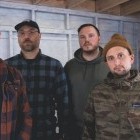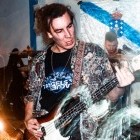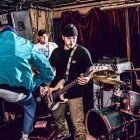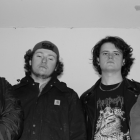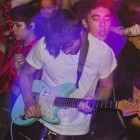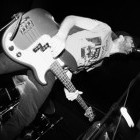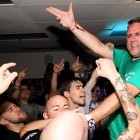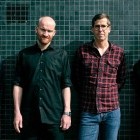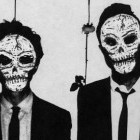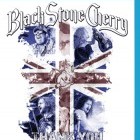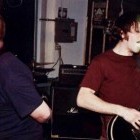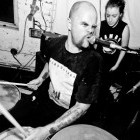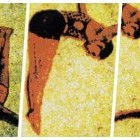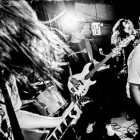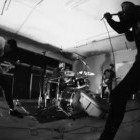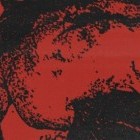The early '90s were an interesting time for hardcore. For the most part, traditional hardcore fell by the wayside and made way for more unconventional sounds. Metal and post-hardcore rock influences were the order of the day.
That landscape inspired 4 kids from Western Connecticut to start a band and play hardcore the way they thought it should be played, fast and furious. Cornerstone was formed. They took cues form older Connecticut bands as Youth of Today and Wide Awake, and flew the flag for straight-forward hardcore.
Releasing just a demo, a split, and an LP in their 2-year lifespan, Cornerstone was one of the bands that helped pave the way for the '90s Youth Crew revival that came in their wake. They are a band that is fondly remembered and still talked about in Connecticut to this day. The group played up and down the East Coast and shared the stage with such bands as H20, Killing Time, Deadguy, and Unbroken.
In 1995, Cornerstone released their sole LP, Beating the Masses, for the infamous European label, Lost and Found. Despite it being pressed on vinyl by Underestimated Records in 1998, the album has been unavailable for over 2 decades.
Enter Jay Reason and his Static Era Records label, who decided to get in touch with the band and ask about getting the record back in circulation. The former Cornerstone members agreed and got the tracks over to Producer/Engineer extraordinaire, Zeuss, and he remixed and remastered Beating the Masses, making it sound better than ever.
Beating the Masses was put up on all streaming platforms as of Oct 1st. But due to some confusion with an Austrian bar band of the same name, it was taken down for sometime. As of this week, Cornerstone's Beating the Masses is back up and theyve added CTHC to their band name to stifle any confusion.
I put together some questions for vocalist Toby Cornerstone and bassist Kevin Rorick and they were happy to answer them and give a good history of the band. Special thanks to Kyle Niland of Dead at Birth Fanzine for helping with some of the questions. Enjoy!
What was the impetus for the formation of Cornerstone, and what would you say were the band’s influences?
Kevin Rorick (bass): At the time, there were no bands in Connecticut that embraced the Youth Crew sound. It was a desert for us. We religiously watched shows from the Anthrax on VHS tapes that you could rent from Malcolm at Trash American Style—and were blown away by the energy and style. Those bands were our influences: Youth of Today, Wide Awake, Side by Side. And it's not that we didnt like the sound at the time—it just wasnt what we thought of as hardcore.
Were there any early shows in each of yours discovery of hardcore that you were able to attend that left a lasting impact on what you would end up doing with Cornerstone?
Kevin Rorick: For me it was Sick of It All at a small club called The Nightbreed (or the Apocalypse, the physical location of the club was the same, they just changed the name) in Norwalk, Connecticut. It was a Sunday matinee that was packed with both local and larger bands. The lineup was Sick of It All, Life of Agony, Sam Black Church, Another Wall, and Higher Force. Besides it being a stacked bill with amazing bands, I was most impressed that everyone that was in a band, was also a participant in the crowd.
My understanding of bands and concerts at the time was that the band is on the stage and the crowd stays on the floor, the band plays and goes off stage, never to be seen until they play again. The blurring of lines, and the fact that the energy of the show was driven by the interaction of the bands and the crowd instantly hooked me. I believe it was this show that solidified mine and Toby’s resolve to start Cornerstone.
What was the local Connecticut scene like when you guys first started back in 1993?
Toby Cornerstone (vocals): It was definitely a changing of the guard and I think we were a bit of a catalyst in that happening. The bands that sprung up after The Anthrax closed—Dismay, Higher Force, Groundwork, Livestock, Another Wall, Evolve, Mindwar—were starting to fade out a bit. Fernando Pinto’s Collision With Tradition comp and the Round 2 Records 7-inch comp captured this era really well. They also had really violent older crowds which definitely scared off some of the super young kids looking to find their place in the scene. Jasta 14 was likely that bridge between that early '90s scene and the one that would follow.
Jasta 14 fit in with that early 90’s crowd in terms of style and sound, but they were also bringing in new kids. I think once those new kids started seeing bands like Cornerstone, Fastbreak, and Breakfaith it was a natural fit. Once Hatebreed arrived in mid/late '94, the changing of the CTHC guard felt solidified. These were the bands that formed The Connecticut Brotherhood.
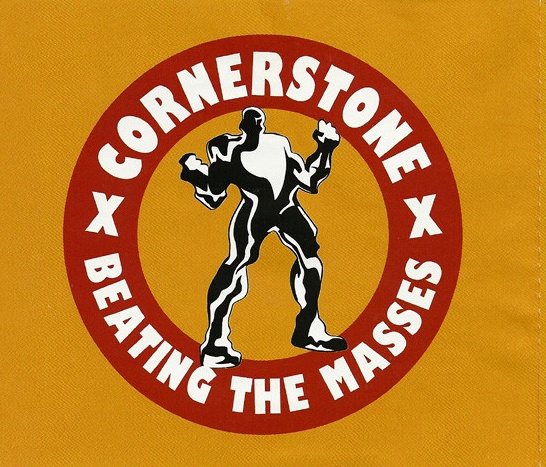
In the early '90s, fast hardcore was an anomaly. Cornerstone was a band that seemingly went against the trends of the time. What was the reaction when the band started playing shows?
Toby: We didn’t get people going crazy for us at first, but we sold out of demos at every show. It was definitely a sign that the new kids wanted to hear fast hardcore, but they just didn’t know how to process it in a live setting in 1993. Despite some super confused crowds in the early days, there was a distinct sense that the tide was shifting. It was fun to watch it happen organically without the benefit of our friends showing up and supporting us during those early years.
Promoters had no idea how to book us. It took us a while to actually get put on the sort of hardcore show we wanted to be playing. We got booked with bands like Dropdead at Studio 158. Even in 1995, as people were more accepting of the sound, we were still getting weird looks.
There is a video of a show of ours where you can see the singer of Fury of V [James "Stikman" Ismean] becoming agitated at our performance. Making dismissive hand gestures and shaking his head. It was great.
As time has gone on, Cornerstone seems to have gained a rep as being a straight edge band. You guys used some Xs in your imagery, but did you guys ever officially consider yourselves a straight edge band?
Toby: Yeah, that’s on me. The earliest incarnation of the band was 3/4th edge. Kevin was known to take a few trips to Marlboro country [laughs]. Even though I was personally one of the edge members, I didn’t take people’s identification with sxe seriously at all. We really knew no one edge at that point other than a few other people in the band.
While I didn’t claim we were an edge band, I definitely did not go out of my way to clarify we weren’t. My graffiti/doodlings of our logo would often invoke Xs and I just didn’t give much thought to it other than “this looks pretty cool, lets press these." We were too fucking insulated and no one was checking our work.
Apologies if we enjoyed any misconceptions as a result of that or offended anyone with our lack of intention.
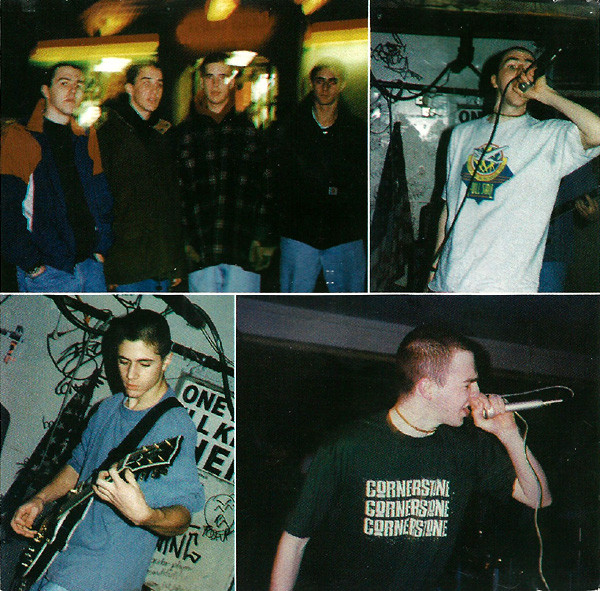
The band recorded The Truth Hurts demo in 1994. What do you remember about the response to it?
Toby: The demo was actually recorded in the fall of 1993. Being an active participant in the hardcore scene before social media meant a lot of trips to Kinkos and hundreds of hand written letters. I had a callus from constantly trying to peel off postage stamps from mail so we could reuse the stamps or give them back to the person who sent the letter. But yeah, having something to sell meant that people had a reason to write.
It was amazing to get letters from all over the world with three bucks stuffed in them asking for demos (and their stupid stamps back!). We worked really hard to get them in the hands of mail order distros as well. Very Distro was just the best back then.
The catalog was amazing and John Dudek wrote a great description of the demo:“Hailing from the same hood as Wide Awake and Youth of Today…” We probably ended up selling 1/4th of our demos through him alone.
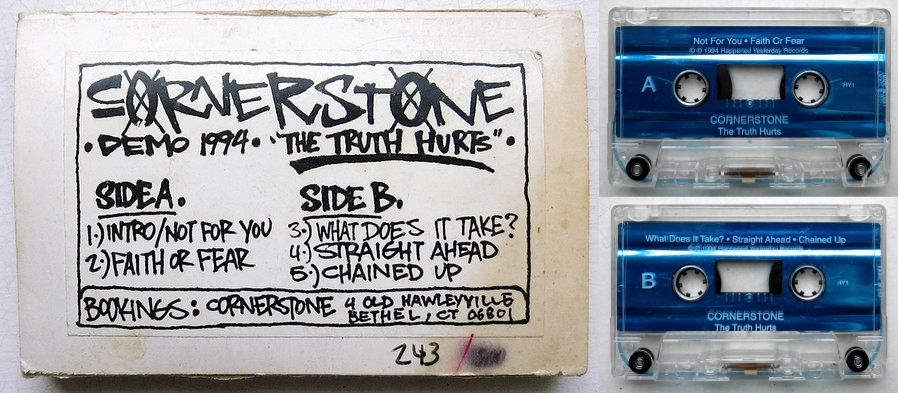
What bands was Cornerstone playing with regularly?
Toby: Hatebreed was probably the band we played with the most. It seriously felt like we played with them every weekend for nearly a year, in and out of Connecticut. They were pure caveman music from the jump and they were at their primal best back then. I know everyone thinks the era they witnessed Hatebreed in to be their best one, but we knew what we were seeing in 94/95.
108 was a band we’d also just magically end up on a lot of shows with. At least ten non-touring bills. We had zero relationship with them though. 25 ta Life would likely be a close third place.
Say what you will about [25 ta Life singer] Rick Healey now, but that guy went out of his way to put us on some great bills we had no business being on and was fearless about putting us over in front of crowds that would have normally murdered us had we not gotten his co-sign.
Cornerstone had their fair share of printed matter (fact sheets, zines, stickers). This was something that was a bit more prevalent among bands back then but what made you guys go above and beyond in that regard?
Kevin: I don’t remember it being a conscious decision to produce as much material as we did, but rather something we felt compelled to do as part of the scene and therefore it just felt like that was what we were supposed to be doing—create the world we wanted to live in. A few of us were close to the world of graffiti as well, which in retrospect probably influenced our decision to "get up" as much as possible in order to get our name out there.
Toby: Without social media, if you didn’t have tons of flyers and stickers, you didn’t have a presence. We always wanted to communicate what was going on and what shows we had coming up.
If I’m not mistaken, you guys only played out in the Northeast. Was there ever any plans to try and do a tour?
Toby: We actually did a small tour in the Summer of '95 with Mouthpiece and Unbroken. We played a great show in Princeton, New Jersey with Mouthpiece in early '95. Matt Wieder and Tim McMahon (from Mouthpiece) were really generous and psyched to be hearing a band playing traditional hardcore and after that show they asked us to join them on a mini tour—probably about 12 states.
Mishap after mishap occurred and we only ended up getting to play 6 or 7 shows on that tour with only 2 being out of the Northeast!
Cornerstone seems to get a little bit of credit for helping kickoff the '90s Youth Crew revival scene? After you broke up, some members went on to form Fastbreak. How do you feel about having that impact?
Toby: It’s cool to have been a part of kicking something off that would really peak a few years after we were gone, but a bit of a bummer we weren’t around to enjoy being a part of it.
I think there were a lot of people back then who wanted to hear and play more traditional hardcore, but maybe didn’t have the nerve to try it, especially coming out of an era where Earth Crisis and Snapcase were easily the biggest bands.
I think a lot of the folks who would go on to start the groups that would be known as the “revival” bands were in the crowds back then. Conversely though, it was easy to turn heads playing this style of music in '93-'95. I’m not sure we’d have had that impact if we started in 1997.
The Beating the Masses full-length was released in 1995 through the notorious German label, Lost and Found Records. How did working with the label come about, and was it a positive experience?
Toby: It was fine, really. We had zero experience with labels, so Bernd from Lost and Found was nice enough to essentially set us up with a split 7-inch with Unit Pride and our debut mini CD. We had no connection to Unit Pride other than fortuitous timing of being a CTHC throwback band at the same time he was releasing the Unit Pride discography. He felt a promo split between us would be a good mix.
As for getting in touch with us, he literally called me at ShopRite in Brookfield, Connecticut. He had called my house and my mom gave this guy from Germany my number at work. I was working in the seafood dept covering a shift for our future drummer, Scott Frosch. We received no money for the recording. One month after the recording I received a loosely packed box of 250 x Unit Pride/Cornerstone splits. All on green and black wax.
One month after that, we got a notification from Bradley Airport customs that we had a pallet that needed to be picked up and signed for. Kevin and I drove to Hartford to see what was there, and sure enough, it was the Beating the Masses CD. 500 of them boxed up on a half pallet.
We had zero involvement in designing them, the song order, etc. Someone else just did the thinking for us. It was disappointing and weird in hindsight. We didn’t know better. I’m not going to lie though, we were psyched. Kevin and I sat on a picnic table outside the customs warehouse and just opened these CDs up and were super proud.
We never spoke to them after that. It wasn’t until we started popping up on comps and seeing weirdo bootleg apparel did we finally get a formal taste of the Lost and Found way of doing business. Fastbreak got back from Europe and said they were seeing dudes rocking Cornerstone track suits [laughs].
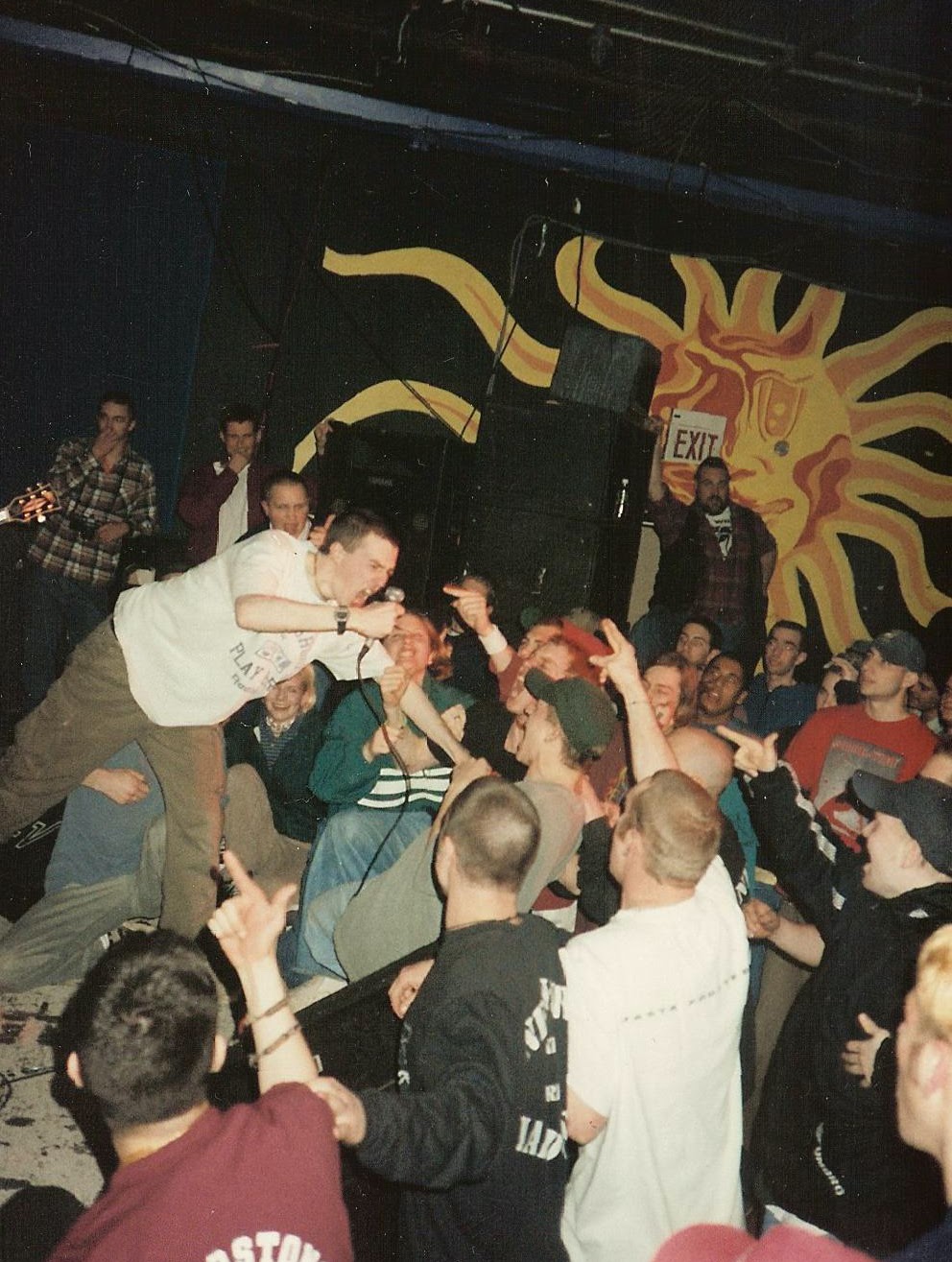
How’d you guys go about getting Ernie Parada from Token Entry to do the iconic cover art for Beating the Masses?
Toby: Ernie was doing the In Your Face discography at the time for Lost and Found and the label put us in touch with him. He was a ton of fun to work with and I’m so psyched he touched our record. He had some pretty cool ideas before we landed on this one.
The guy depicted at the top left holding the contract is Chris Williamson, who ran Rock Hotel and managed the Cro-Mags, if you are looking for some trivia.
Ernie asked us if we had anyone in our past that had ripped us off and I said, “Yeah, Hearsay Records out of Boston." Ernie added that to the contract Chris Williams was holding. Hearsay put us on comp with our friend Kurbjaw, Halfmast, and Emission. Four bands doing traditional hardcore out of NY, NJ, CT, and MA. We sent him our DAT and he ghosted us. The record was released and we never as much as received a token copy or had any input. I had to buy mine.
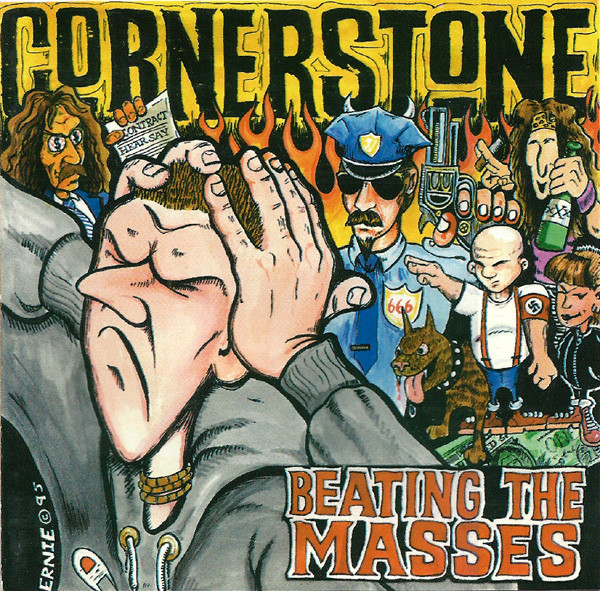
Who came up with the song title “CT Crucial Kickbox”?
Kevin: Most likely, the band collectively. The title reflects late night drives from shows and our running commentary on the state of dancing at shows.
Toby: Connecticut had some wild dancers back then and someone had dubbed the insane style to be “kickboxing." We just thought it was a funny name and mashup of styles. The original title was "The Danbury Fair Maul."
What was the band’s favorite venue to play? Are there any particular shows that stand out? Any other overlooked bands from that time that you feel deserve a mention?
Kevin: I have two favorite venues, for two very different reasons.
- The Tune Inn — it was the most ‘professional’ club, in that they had a drum riser, sound board and a sound guy, and it was a stop for all the larger hardcore bands at the time, so the opportunity to play a show with bands we looked up to at the time: Madball, Killingtime, Murphy’s Law etc, was ever present.
- The Bristol Skate Park (Bristol Bike Exchange) — this was the true definition of DIY. The bands played in the middle of a half-pipe—someone brought a P.A, there was no security, it was just us. Kids putting on shows, building a scene. Every kid that was at the show truly wanted to be there and wanted to support and participate in the scene. There would be bigger shows, but then there would be fully local Connecticut weekends, and all the same kids would show up.
There are few bands for me that maybe overlooked, or not discussed enough in their support for building the local scene, but were in fact critically important in building the scene in the mid-'90s: Tenfold (members went on to Fastbreak, Follow Through, and Right Brigade), Sum of All Fears—who were completely dialed in technically and delivered a balance of fast and introspective hardcore, and Breakfaith, who were one of the original bands of the CT Brotherhood.
Every weekend between 1994-1996 we were sharing a bill with one of these bands somewhere in Connecticut.
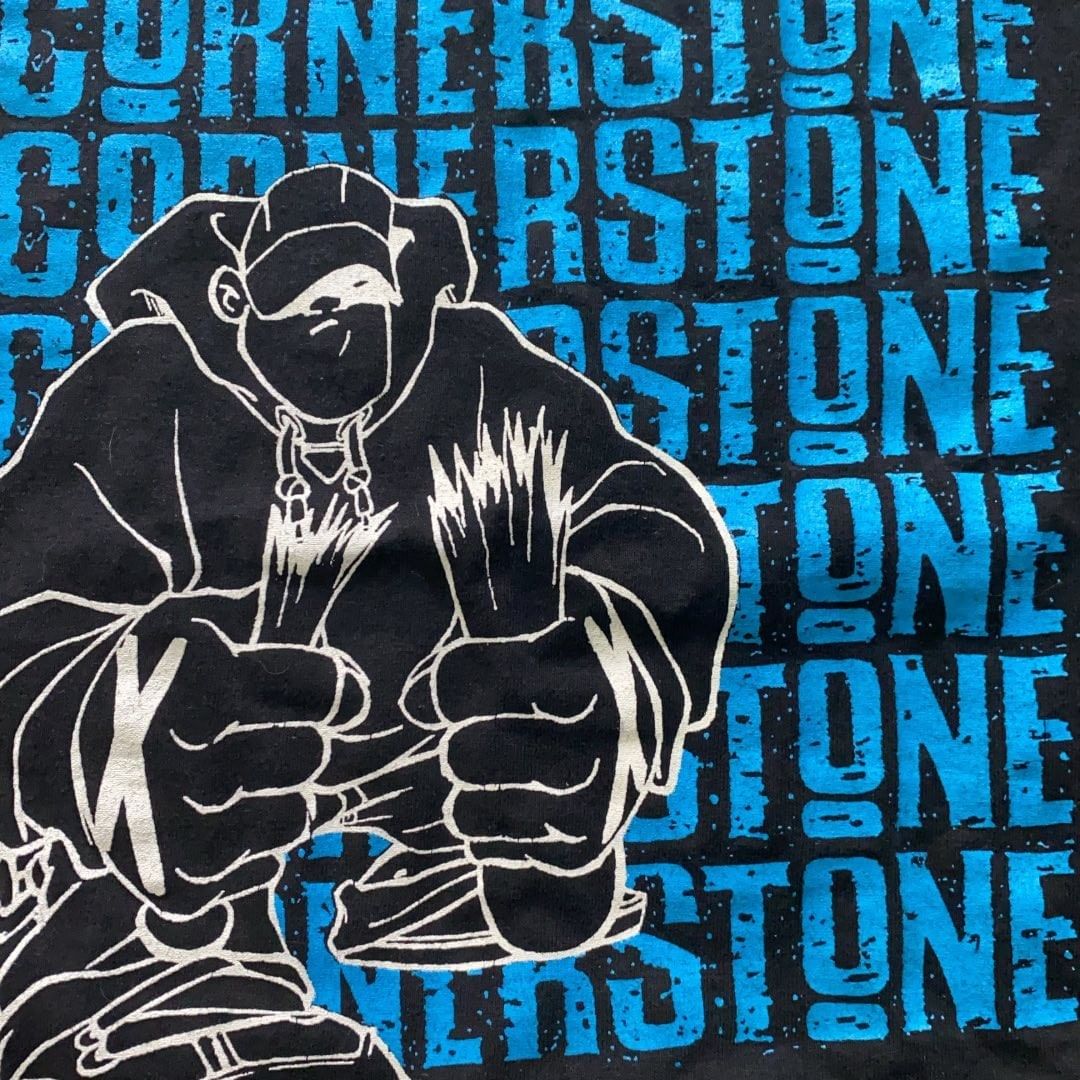
Cornerstone existed for a very short period (1993-1995). What led to the end of the band? What was the last show that was played?
Kevin: College. Toby went to school in Florida, I was going to school in New Haven. There was never a discussion, it was just an understanding that we were both going to school and that was our focus. I feel as if we had two last shows—as a fully functioning band, we played the Tune Inn in the winter of 95, with Fastbreak and 25 ta Life—it was a memorable show for two reasons:
1. I tripped over my bass chord and face planted on stage—there is a board tape where you can hear the "thunk" and then Toby yelling "Kevin!" and 2. During the 25 ta Life set, they snuck Jamie Jasta on stage, (he was banned from the Tune Inn) and there was a mini-Hatebreed set in the middle of their set. We then played the summer of 1996 at the Sports Palace in New Britain with Halfmast, Fastbreak, and Sum of All Fears.
How does it feel to know that there’s still interest in Cornerstone after all these years? The band worked with Jay Reason at Static Era Records to get your material remastered and re-released.
Kevin: I’m flattered and stoked that something we created is still generating interest this many years on. When we started Cornerstone, it was because we were passionate about what we considered ‘true hardcore’
Toby: It’s really amazing. This all started bubbling up during covid. Without shows, I think a lot of kids that make up today’s scene started getting super nostalgic and interested in old hardcore. The attention has been fun, but it’s been more amazing to bond with people in new bands and realize how little has changed despite social media, Spotify, etc. (Big shout out to Ill Communication, Almighty Watching, and Anxious).
Unfortunately, I personally never got to cross paths with Jay Reason when I was living in Connecticut, but he’s built a reputation for being a dye-in-the-wool representative of CTHC. He opened an awesome brick and mortar record shop in Connecticut this past year (Static Era Records) and had even facilitated the remaster of Dismay’s In Doubt LP for a whole new generation of kids who hadn’t heard it. He’s just doing a ton right now to preserve our collective CTHC culture and history.
He had reached out to Steve Pica and asked if we were interested in a straight-forward remaster of the album. When Steve told him we had the actual raw masters, Jay facilitated getting the reels to Australia (the only place we could find an Akai 12 track machine) for a digital transfer and then got Zuess to remix and remaster the whole damn thing before “jumping on a Rob Zombie project” or something equally out of our league.
To get such a big producer/engineer to touch this thing was something we couldn’t have done without Jay. This is a passion project for him and we’re just eternally grateful he recognized our place on the timeline and wanted to make sure we got the posterity we deserved with the reissue.
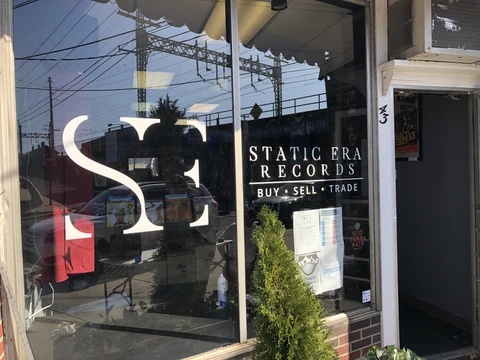
What can we expect from this relationship going forward?
Toby: In the Winter of '95, we recorded several songs at Morgan Walker’s place in Wilton, Connecticut. Morgan had done the Dismay demo and actually had a great recording space. Those songs never saw the light of day and are our best tracks, easily. It’s overdue that they are heard and Jay and Static Era will be putting those out as well.
Cornerstone still manages to be regarded as a great unity band for all walks of '90s CTHC, what do you think is the ultimate legacy of the band? Any final thoughts?
Toby: I think it’s up to everyone else to decide that for us. Hardcore is something that is super crucial and present, but at the same time is incredibly sentimental and nostalgic. Cornerstone was really a regional act, but the best part of hardcore, the part that an outsider to this subculture will never understand, is the sense that on any given night, at any given show, you can be a participant in what feels like the most important and incredible thing in the world.
Hardcore music transcends region, it transcends the fact that there are only 150 people witnessing it. It’s a super personal prism and is indescribable to an outsider. The fact that we got to participate in those moments that so many of us identify with 25 years later is amazing.
***
Beating the Masses is available now at this link via Static Era Records.
***
Help Support What No Echo Does via Patreon:
***
Tagged: cornerstone
